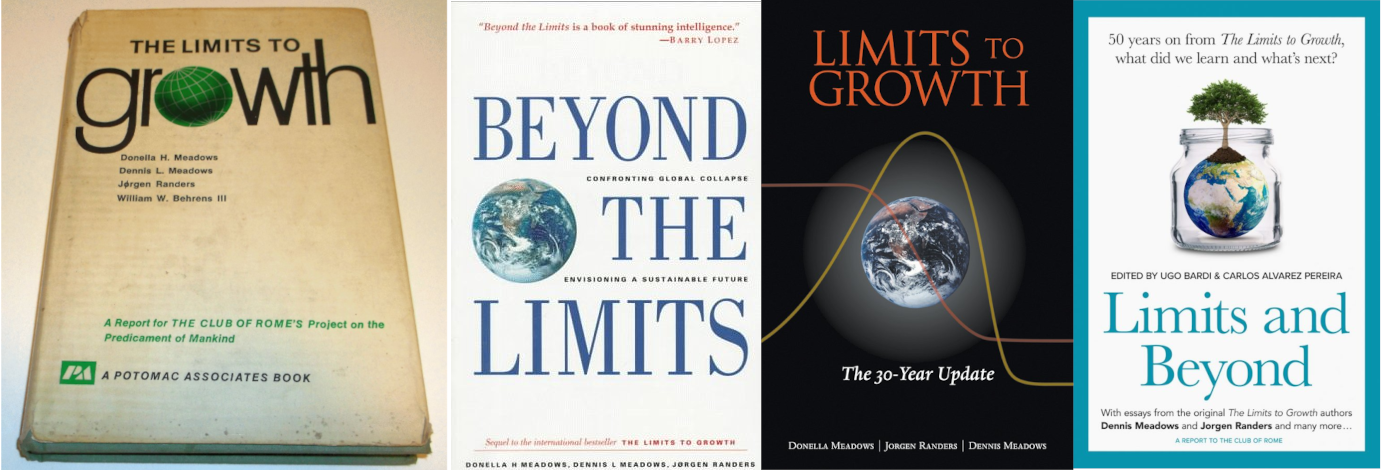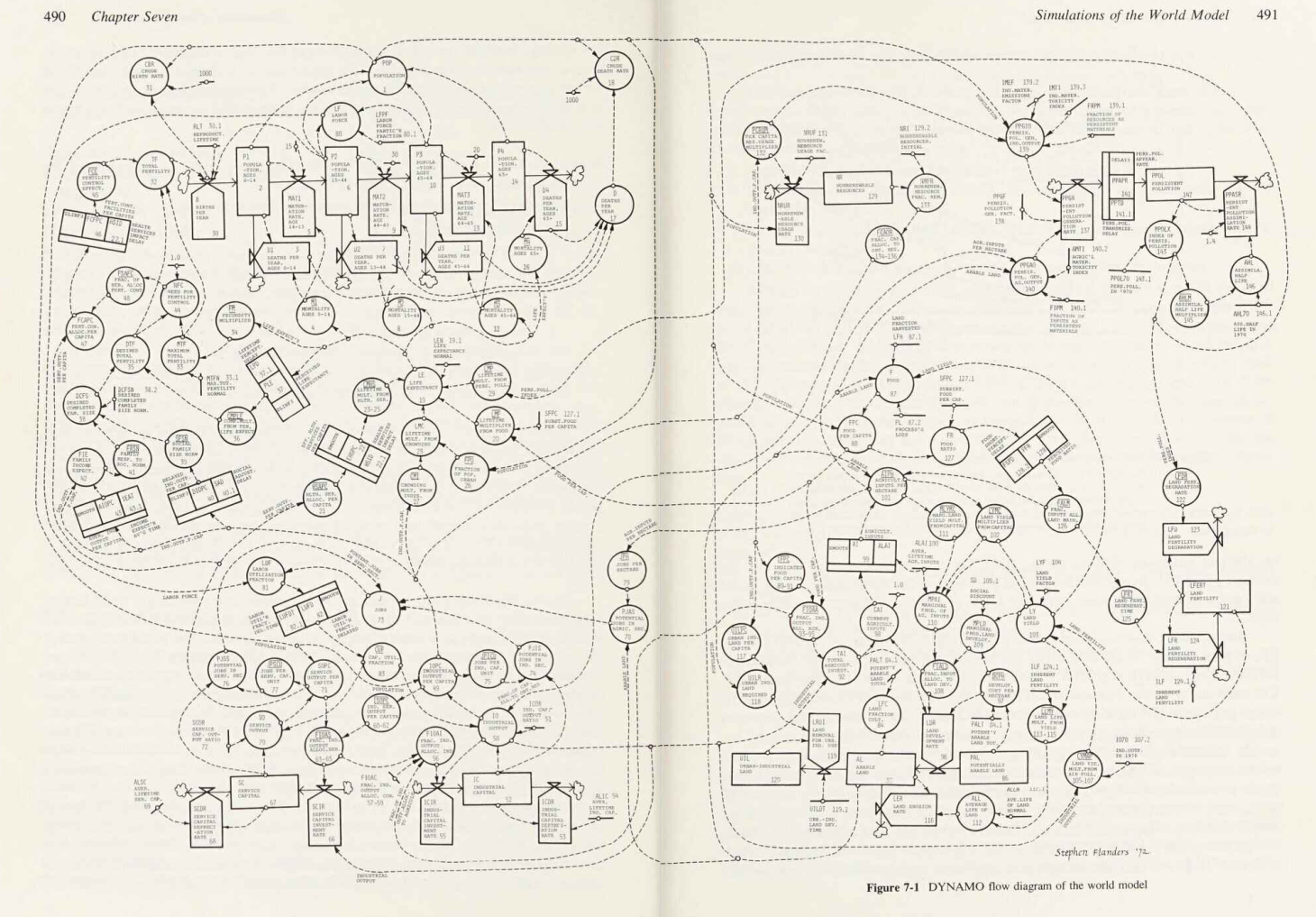Back to the syllabus
ECMJ: Simulating the limits to growth
In 1968 a small international group of people from the fields of academia, civil society, diplomacy, and industry gathered in Villa Farnesina in Rome for a meeting organized by the famous industrialist Aurelio Peccei. Peccei held that viewing problems of humankind—environmental deterioration, poverty, endemic ill-health, urban blight, criminality—individually, in isolation or as "problems capable of being solved in their own terms", was doomed to failure, since they're all profoundly interrelated.

He and the then Director-General for Scientific Affairs at the OECD (Organisation for Economic Co-operation and Development), Alexander King, went on to found the Club of Rome, with the mission to investigate such pressing global issues.
The Limits to Growth
In 1972 Donella H. Meadows, Dennis L. Meadows, Jørgen Randers and William W. Behrens III, representing a team of 17 researchers, published a report on the exponential economic and population growth with a finite supply of resources, titled The Limits to Growth. Several other reports followed in the subsequent decades (see the references at the end of these notes).

The study was based on a computer simulations on the interactions between the earth and human systems, developed by Jay Forrester at MIT. The model was called World3.
World3
World3 was developed in 1972. That's the same year the C language first appeared. Indeed, the language used for World3 is a now-dead language DYNAMO, created under Forrester's direction.
Essentially, World3 consist of a discrete-time dynamical system that can be regarded as the Euler method discretization of a continuous-time system. The book with the source code is accessible on archive.org. Here is a diagram of the whole system, were nodes represent variables and edges represent some dependency between the two variables:

Bearing in mind that this simulation was conducted in the 60s, when the C language didn't even exist and computational resources were extremely limited, we notice that the Euler method, which is the simplest method to discretize a differential equation, has several shortcomings, and the performed simulation considered a time-step of 5 years.
Subsequent works re-implemented it using simulation-oriented programming languages such as STELLA and Modelica. Research has also been conducted to investigate the system's sensitivity, among other aspects (see e.g. [Thissen]).
References
Limits to Growth books
[LoG1]. Meadows Donella H. The Limits to Growth. Brown Spots on Pages edition. Universe Books, 1972.
[LoG2]. Meadows, Donella H., Dennis L. Meadows, and Jorgen Randers. Beyond the Limits: Confronting Global Collapse, Envisioning a Sustainable Future. Vermont: Chelsea Green Pub Co, 1993.
[LoG3]. Meadows, Donella H., Jorgen Randers, and Dennis L. Meadows. Limits to Growth: The 30-Year Update. Illustrated edition. White River Junction, Vt: Chelsea Green Publishing, 2004.
[LoG4]. Bardi, Ugo. Limits and Beyond: 50 Years on from The Limits to Growth, What Did We Learn and What’s next? Edited by Carlos Alvarez Pereira. Verlagsort nicht ermittelbar: Exapt Press, 2022.
Other articles
[Thissen]. Thissen, W.A.H. “Investigations into the Club of Rome’s World3 Model : Lessons for Understanding Complicated Models.” Phd Thesis 1 (Research TU/e / Graduation TU/e), Technische Hogeschool Eindhoven, 1978. https://doi.org/10.6100/IR79372.